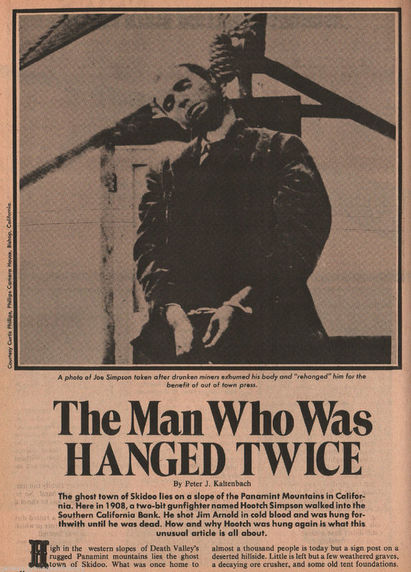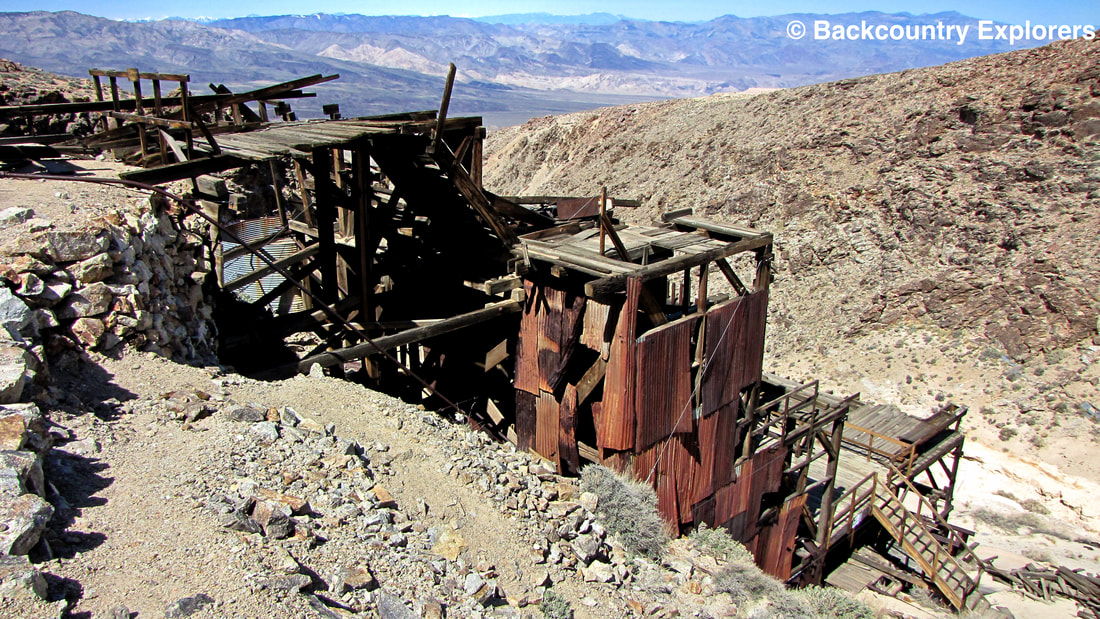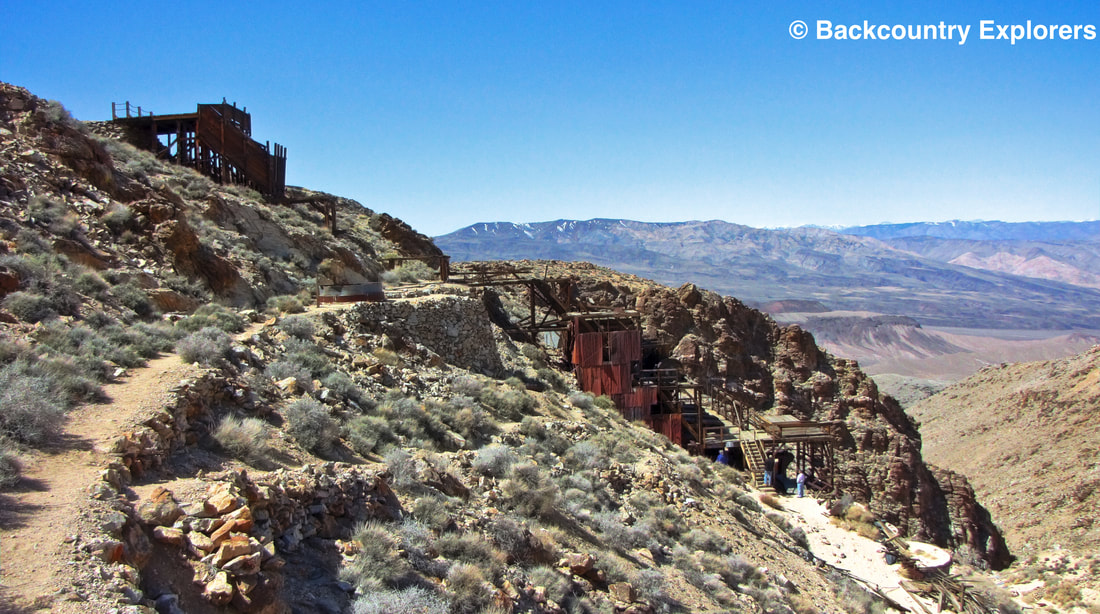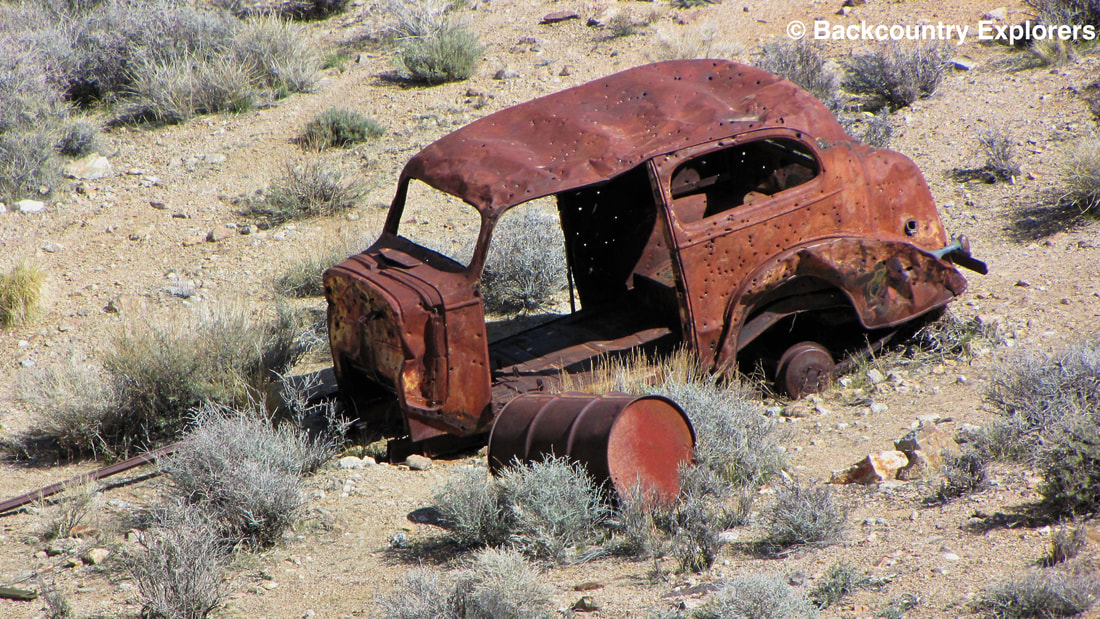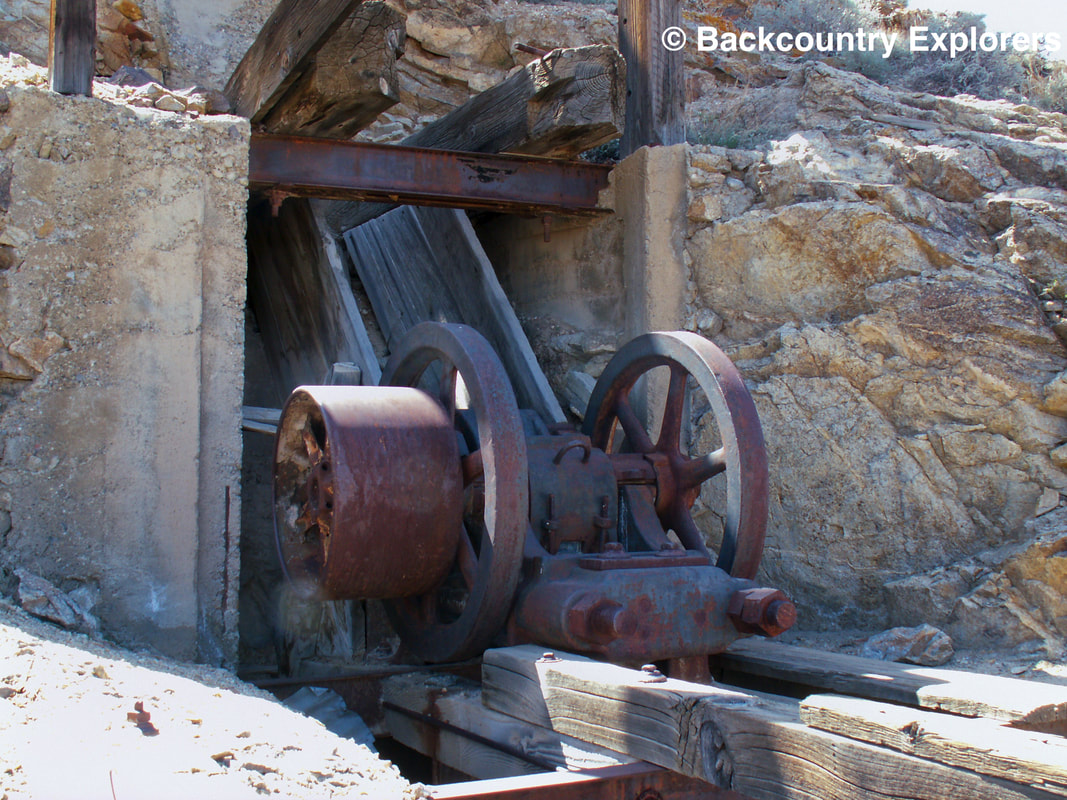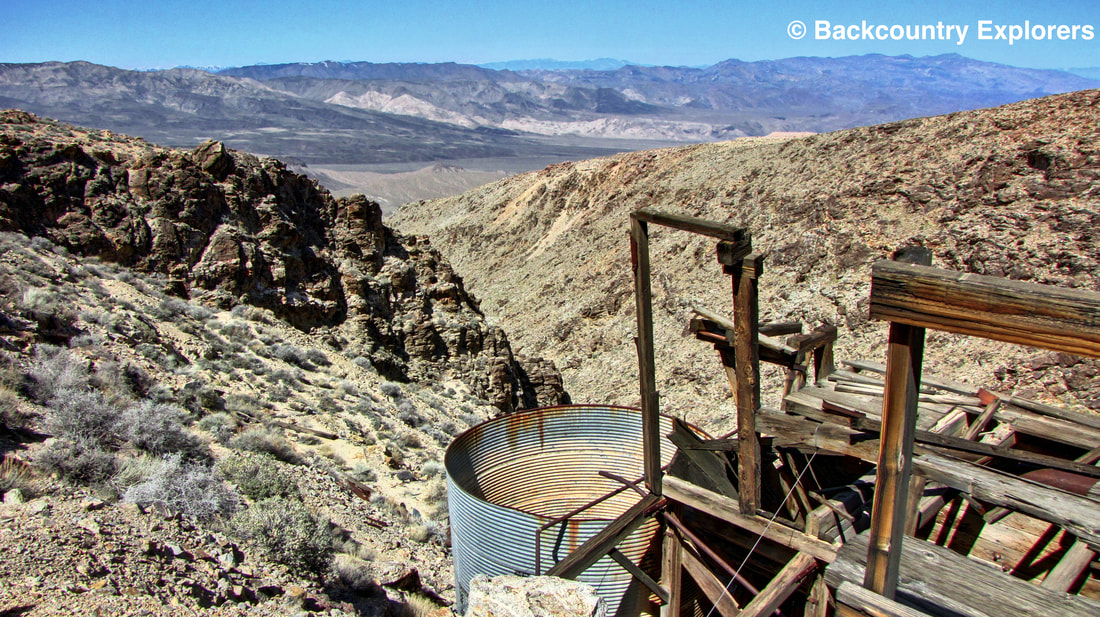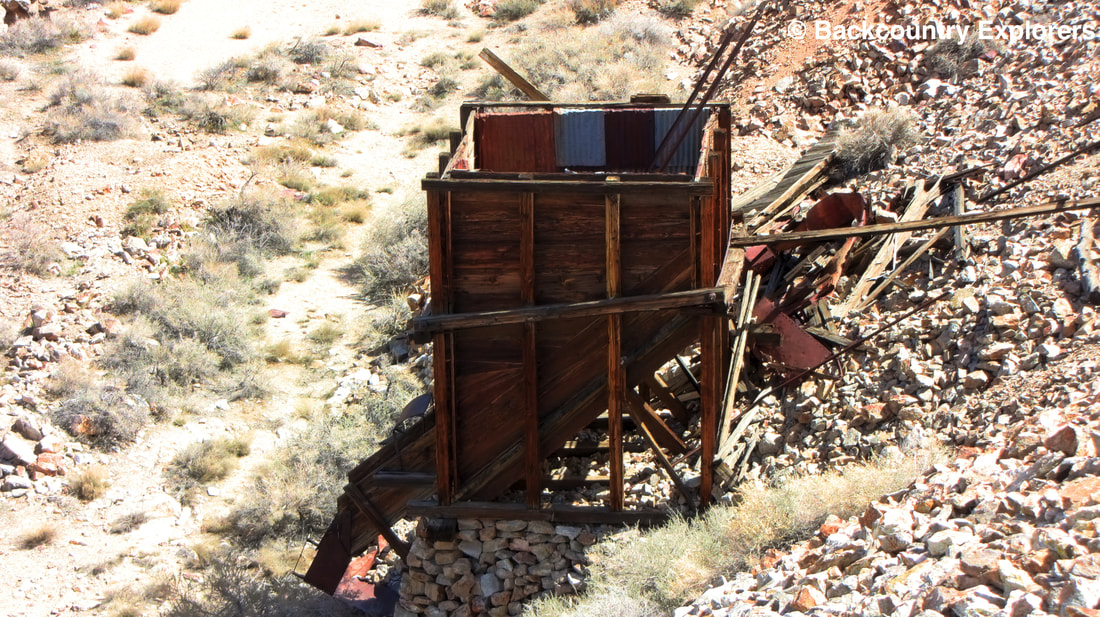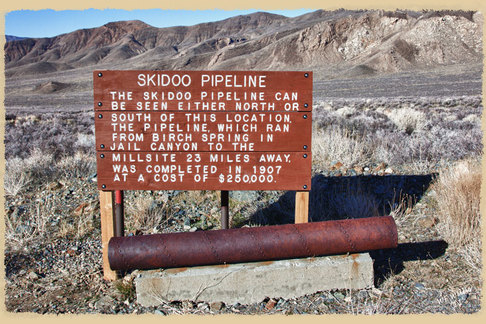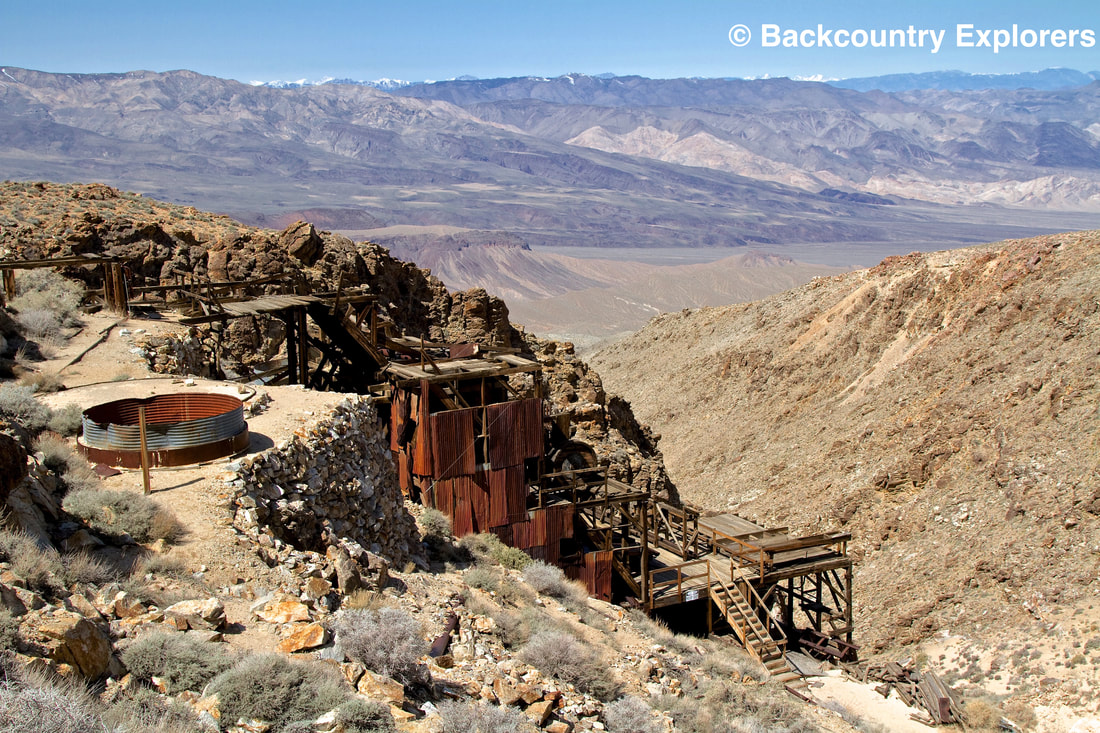Skidoo Ghost Town & Mill
GPS: 36.436618°, -117.154562°
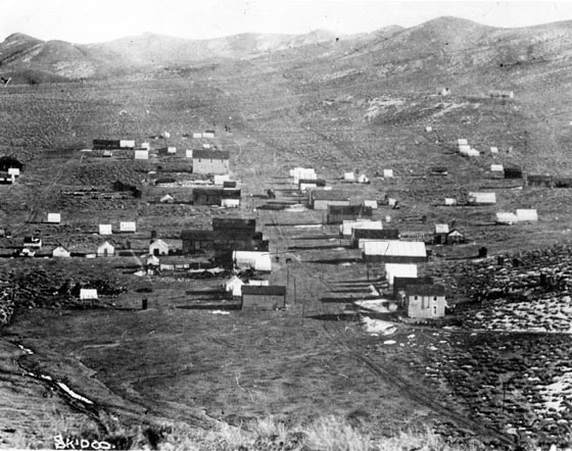
Skidoo (formerly, Hoveck) was an unincorporated community in Inyo County, California. The geographical location of the old town site lies at an elevation of 5,689 feet. Skidoo is a virtual ghost town located in Death Valley National Park.
History
Skidoo is representative of the boom towns that flourished in Death Valley during the early 20th century. The town’s livelihood depended primarily on the output of the Skidoo Mine, a venture operating between 1906 and 1917. During those years the mine produced about 75,000 ounces of gold, worth at the time more than $1.5 million. Two unique items are associated with Skidoo’s mining heyday. First the town possessed the only milling plant in the desert operated almost completely by water power. Second, the construction of the water pipeline was a phenomenal engineering feat; its scar can still be seen between its origin near Telescope Peak and the mill site. The fifteen-stamp amalgamation and cyanide mill built by the Skidoo Mines Company is a rare surviving example of an early 20th-century gravity-feed system for separating gold from its ore
History
Skidoo is representative of the boom towns that flourished in Death Valley during the early 20th century. The town’s livelihood depended primarily on the output of the Skidoo Mine, a venture operating between 1906 and 1917. During those years the mine produced about 75,000 ounces of gold, worth at the time more than $1.5 million. Two unique items are associated with Skidoo’s mining heyday. First the town possessed the only milling plant in the desert operated almost completely by water power. Second, the construction of the water pipeline was a phenomenal engineering feat; its scar can still be seen between its origin near Telescope Peak and the mill site. The fifteen-stamp amalgamation and cyanide mill built by the Skidoo Mines Company is a rare surviving example of an early 20th-century gravity-feed system for separating gold from its ore
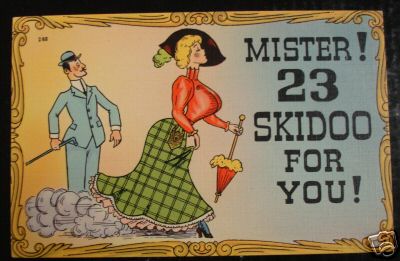
Names
The name Skidoo comes from the expression 23 skidoo, a slang expression of the time, for which various origins have been suggested. Locally it is believed by some Skidoo came from the notion that there was 23 miles of pipe from Telescope peak bringing water to the mill.
The Hoveck post office opened in 1906, changed its name to Skidoo in 1907, and closed in 1917. The name Hoveck honored Matt Hoveck, manager of the Skidoo Mine.
The name Skidoo comes from the expression 23 skidoo, a slang expression of the time, for which various origins have been suggested. Locally it is believed by some Skidoo came from the notion that there was 23 miles of pipe from Telescope peak bringing water to the mill.
The Hoveck post office opened in 1906, changed its name to Skidoo in 1907, and closed in 1917. The name Hoveck honored Matt Hoveck, manager of the Skidoo Mine.
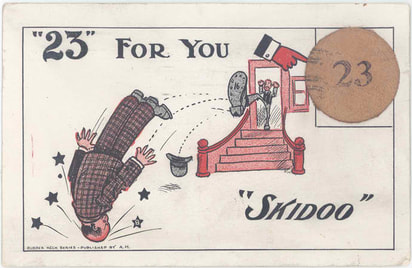
Both skidoo and the full phrase 23 skidoo mean to “go away”, “beat it”, “scram” or suggest that the person addressed should get out while the going’s good. There’s no difficulty over the true origin of skidoo, since it’s almost certainly a variant of skedaddle, a nineteenth-century word of unknown origin that has the sense of “go away, leave, or depart hurriedly”, as the Oxford English Dictionary puts it. Skidoo is recorded from early in the century around 1904.
|
Resources:
|
Hanging of Joseph Simpson
On April 22, 1908, 33 year old Joseph L. Simpson was strung up and hung from a telephone pole in streets of Skidoo. Simpson was charged with shooting and killing respected business man James Arnold on April 19, 1908. Arnold and Simpson both owned businesses in Skidoo. Arnold was a 43 year old proprietor of the Skidoo Trading Company which also housed the Southern California Bank. Joe Simpson was co-owner of the Gold Seal Saloon with partner Fred Oakes. Arnold was also credited as founder of Skidoo while Simpson was also greatly involved in mining. By most accounts Simpson as an alcoholic. Simpson belonged to the “Hootch Fighters League” drinking club sponsored by the saloon, which may have given Simpson an oft published nickname of "Hootch." Simpson had syphilis contracted by his many visits to the red light district. Simpson’s syphilis was treated by Dr. Reginald E. McDonald, a physician employed by the Skidoo Mines Company. Three days after he died, news reporters flocked Skidoo only to find that Simpson had already been buried. Legend has it that towns people, dug him up him and re-hung him for the benefit of the press. Data of the time suggests otherwise, but the legend lives on. After Simpson’s burial, Dr. McDonald was responsible for digging up Simpson’s body. He wanted to study the effects of syphilis on the brain so he completed a autopsy. McDonald strung the body up to recreate the hanging and photographed the body. Dr. McDonald later removed the head from the body and boiled the flesh off the skull, keeping it as a souvenir. McDonald later moved to Randsburg. Hootch’s skull was rediscovered in a doctor’s office in Trona. The skull has since been passed on over the years and is still in private hands. This text taken in part from Skidoo, California by LHOON and is licensed under Creative Commons Attribution-ShareAlike License |
